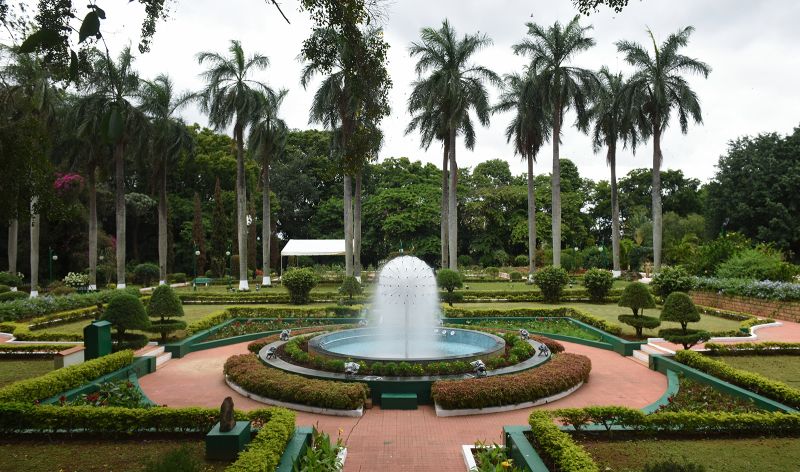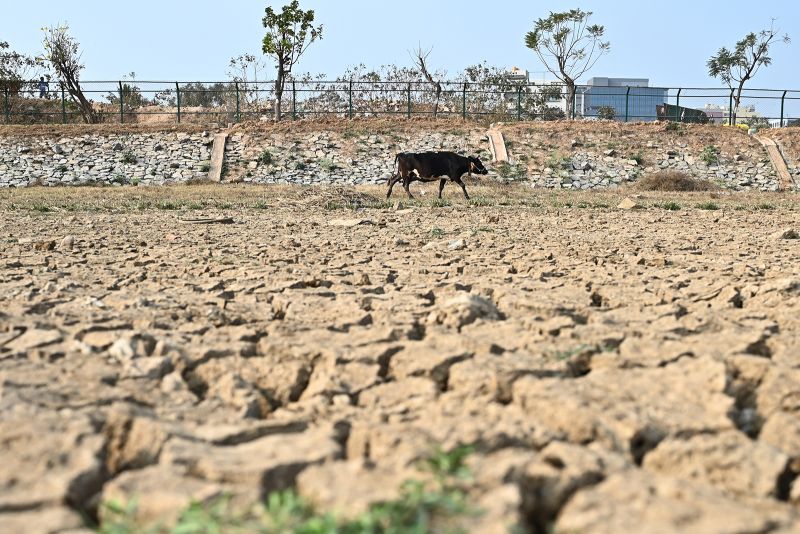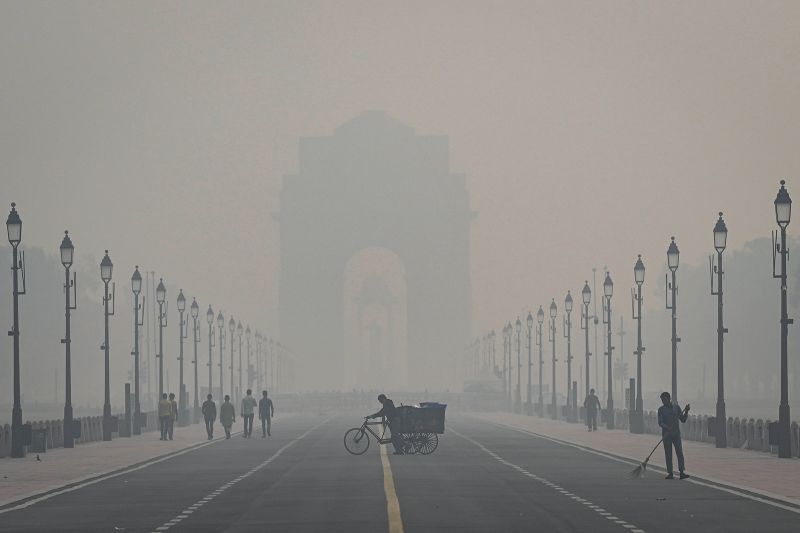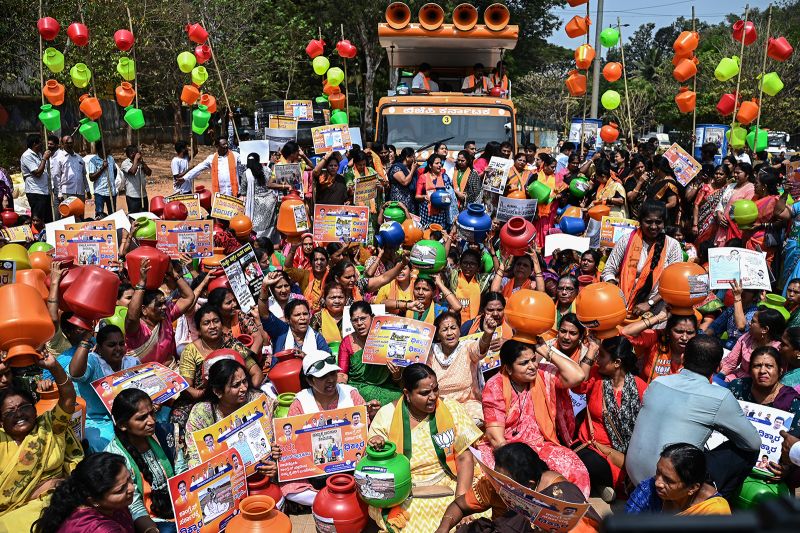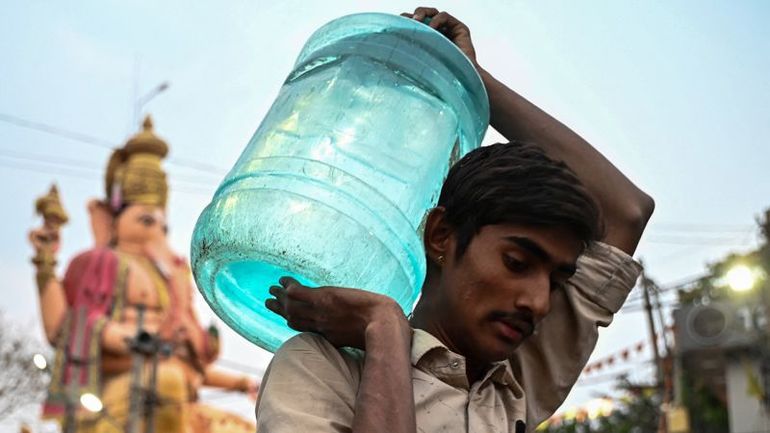
Bengaluru's Water Crisis Escalates: Urgent Calls for Conservation and Sustainable Practices

The water scarcity in Bengaluru is reaching critical levels, with residents and experts sounding the alarm as temperatures rise. The looming summer months threaten to exacerbate the situation, prompting urgent appeals for reduced water usage and eco-friendly alternatives.
The water tanker arrives in the suburb of Bandepalya once every two weeks, carrying 1,000 liters of water. It is a lifeline for hundreds of people in this area of India's bustling metropolis.
Susheela, a resident of Bandepalya, relies on the water tanker to provide for her family of four. She mentioned that the scene of women with empty buckets clamoring for water is a common sight. Sometimes, fights break out and there is a lot of arguing among the residents. However, the need for water is so great that they feel desperate and have no choice but to wait for the tanker to arrive.
Susheela, like many others in Bengaluru, is facing water scarcity as her taps have stopped running and the borewells that provide water to her home are dry.
Bengaluru, also known as India's "Silicon Valley" and housing major companies like Infosys and Wipro, needs approximately 2 billion liters (528 million gallons) of water daily to cater to its nearly 14 million residents. However, this amount has significantly dropped by about 50% in the past week, as reported by V. Ram Prasat Manohar, the chairman of the city's water supply and sewage board.
Residents in Bengaluru have been urged to conserve water by using it wisely. They are encouraged to bathe on alternate days, use disposable cutlery, and limit washing clothes and utensils.
The water scarcity situation in Bengaluru has been labeled as dire by residents and experts alike. As temperatures rise in the approaching summer months, the situation is expected to worsen.
Climate scientist T.V. Ramachandra from the Centre for Ecological Sciences has been sounding the alarm for more than ten years. He points to a combination of factors including unplanned urban expansion, fast deforestation, and the worsening climate crisis as the root causes of the current situation - and unfortunately, everyone is feeling the consequences.
The once lush garden city of India has now transformed into a landscape dotted with dried up lakes.
For many years, Bengaluru, also known as Bangalore, was famous for its extensive network of man-made lakes that supplied water to the city's residents. The city's lush greenery, surrounded by forests and benefiting from its high elevation of 900 meters (nearly 3,000 feet) and pleasant climate, earned it the nickname "India's garden city."
However, starting from the early 1990s, Bengaluru has experienced rapid urbanization due to its transformation into a major tech hub, leading to exponential growth. The city's developers cleared forests and constructed buildings around its lakes as the population, originally around 4 million, expanded to accommodate more than three times that number.
Ramachandra pointed out that as more layers of tarmac were added in the city, Bengaluru lost its natural ability to absorb water.
He mentioned that currently, 83% of Bangalore is covered in concrete, leading to a lack of vegetation and hindering groundwater recharge. This situation poses a major problem for the city.
The gardens of Karnataka Raj Bhavan, the residence of the state governor, in 2018. Bengaluru was once known as "India's Garden City."
The gardens of Karnataka Raj Bhavan, the residence of the state governor, in 2018. Bengaluru was once known as "India's Garden City."
The Cauvery River, a significant waterway flowing through southern Karnataka state, supplies over 70% of the city's water. Bengaluru, the capital of Karnataka, heavily relies on this source for its water supply.
As the city grew, there wasn't enough time for authorities to expand the water pipe network to new neighborhoods. Instead, these areas had to rely on borewells for groundwater.
Last year, a weak monsoon led to depleted groundwater levels, resulting in a water shortage for the city's large population.
But for around 4 million people who rely on borewells and live on the outskirts of the city, the situation is much more severe. According to Bengaluru’s Deputy Chief Minister D.K. Shivakumar, about 7,000 out of the city’s 16,000 borewells have dried up. Experts suggest that the focus should be on assisting these individuals.
Civil engineer and water researcher Vishwanathan, who is based in Bengaluru, mentioned that the 11 million individuals dependent on the Cauvery River are facing some scarcity but not a major crisis.
“For the other three and a half million people who are completely dependent on groundwater, there is a crisis because groundwater is going dry.”
A cow walks across the arid Nallurahalli lake at Whitefield in Bengaluru on March 10, 2024.
A cow walks across the arid Nallurahalli lake at Whitefield in Bengaluru on March 10, 2024.
Idrees Mohammed/AFP/Getty Images
‘Pushing families to the limit’
Residents from Bandepalya, a low-income community suburb in the city’s south, line up with buckets from 9 a.m., waiting for the water tanker to arrive.
Private tankers authorized by the government deliver water to communities during periods of low river and groundwater levels. Residents are charged for this service, with prices increasing during times of high demand.
About four hours later, in the afternoon, the tanker arrives in Bandepalya.
Women are in a rush to fill their buckets and head back home. They each try to fill two big buckets to take with them. One woman even taps the bucket to see how much water is inside.
The tanker gets emptied in just a few minutes.
Kumkum, a resident who goes by one name, shared that they receive water only once every 15 days and need to purchase water daily. She mentioned using bottled water to clean her children's faces in the mornings.
Due to the water shortage, Kumkum's youngest child has become ill with a high fever.
"We haven't had water in these drums for days," she gestured towards the empty buckets in her house. "We can't do laundry or wash our dishes. We'll have to rely on rainwater for our daily tasks during the monsoon."
People line up to collect drinking water during the ongoing crisis in Bengaluru on March 14, 2024.
People line up to collect drinking water during the ongoing crisis in Bengaluru on March 14, 2024.
Idress Mohammed/AFP/Getty Images
Authorities have set a maximum price of 1,200 rupees ($14) per tanker for government-commissioned deliveries. However, residents are facing financial difficulties.
Susheela, a resident in Bandepalya with a family of four, mentioned that people in the area usually earn between 6,000 – 8,000 rupees ($70 – 95) a month. Many of them are now forced to use half of their income to purchase water from the tankers.
Geeta Menon, a social worker in Bengaluru, shared, "We are barely bathing and using very little water. However, we are all facing challenges." She expressed concern that the lack of hygiene could lead to an increase in diseases and illnesses among low-income communities.
"Kids are going to the bathroom outside because there's no water at home, they're getting thirsty, and families can't even cook," she explained. "This isn't just a problem for now, it will cause big issues in the future if it keeps happening."
CNN reached out to Benagluru’s Water Supply and Sewage Board for comment but has not received a response yet.
No one spared
While the city’s poorest are bearing the brunt of Bengaluru’s water crisis, it hasn’t spared the upper middle class either.
Many housing societies' management send daily updates to residents, advising them about water shortages and reminding them to use water wisely.
One apartment complex has issued a notice to its residents, requesting them to cut down their water usage by 50%.
A thick layer of smog seen engulfed during early hours of morning after Diwali at Kartavya Path on November 13, 2023 in New Delhi, India.
A thick layer of smog seen engulfed during early hours of morning after Diwali at Kartavya Path on November 13, 2023 in New Delhi, India.
Sanchit Khanna/Hindustan Times/Getty Images
Related article
The notice, which was seen by CNN, highlighted the alarming water situation in the area. It stated that there is very little water coming from the Cauvery supply, and the community is relying heavily on borewell water. Out of the 11 borewells, only 5 are currently working, and there is uncertainty about when they may run dry. If they do, there will be no warning beforehand.
Garment factories have been affected by the water shortage, leading to a slowdown in production. Additionally, restaurant water bills have doubled as a result, as reported by Reuters. Some global companies have allowed employees to skip meetings in order to collect water from tankers.
The water crisis has escalated into a political dispute just weeks before a national election. The ruling Bharatiya Janata Party (BJP) in India has criticized the Congress-led state government for what they claim is mismanagement of the situation.
The main opposition Congress has claimed the BJP has not done enough at a federal level to help financially with the crisis.
Activists and BJP members hold empty water pots during a protest against the state government over the severe water crisis, in Bengaluru on March 12, 2024.
Activists and BJP members hold empty water pots during a protest against the state government over the severe water crisis, in Bengaluru on March 12, 2024.
Idress Mohammed/AFP/Getty Images
Yet, for the city’s residents, the tit-for-tat arguments mean little as they experience the worst of the shortages.
For Maher Taj, a mother of seven, the past few weeks have been unbearable.
"We have reduced the number of times we use the bathroom and started taking turns to shower," she explained.
"Our kids are using the school bathrooms and my husband is using the facilities at work. I have also cut down on water usage in every aspect of our daily routines. It's really putting a strain on my family."
Editor's P/S:
The water crisis in Bengaluru, India, is a stark reminder of the consequences of unplanned urban expansion, deforestation, and climate change. The city's once-lush landscape has been transformed into a concrete jungle, with 83% of its area covered in tarmac. This has hindered groundwater recharge and exacerbated the water shortage. The situation is particularly dire for the city's poorest residents, who rely on borewells for their water supply.
The water crisis is also having a significant impact on the city's economy. Garment factories have been forced to slow down production, and restaurant water bills have doubled. The crisis has also escalated into a political dispute, with the ruling BJP criticizing the Congress-led state government for mismanagement. However, for the city's residents, the tit-for-tat arguments mean little as they experience the worst of the shortages. The crisis is putting a strain on families, with children using school bathrooms and adults using workplace facilities to access water. It is also leading to an increase in diseases and illnesses among low-income communities.
